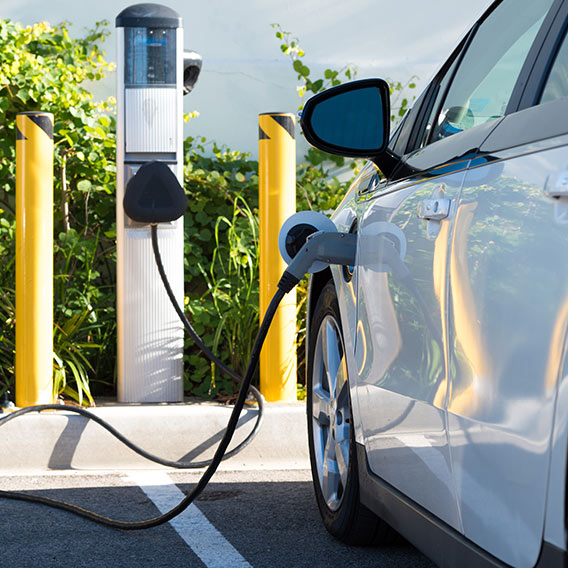AUTO
Why the Car You Can Afford Should Be the Car of Your Dreams
EXPECTED READ TIME: 3.5 MINUTES
The enthusiasm-wilting truth about many dream cars is that the blush of ownership fades long before the payments do. Many buyers overlook the financial details that turn these cars from dream ride to ball and chains.
Does that mean tossing out your dreams of a sweet ride? Not exactly, but it might mean tempering your dreams with a little pragmatism.
Dream Cars Aren’t Always Dream Deals
A new car loses a large portion of its value (called depreciation) the moment you drive it off the lot. If you purchase an expensive vehicle with no down payment, it’s likely that you’ll find yourself upside down (owing more than the car is worth) as soon as you take the keys in hand.
If your dream car is pricey, that will mean a longer loan term. Long terms usually mean smaller, more affordable monthly payments, but they have two drawbacks:
More Interest, Higher Overall Cost
The longer the term of your loan, the more you pay in interest and the more money you pay for your car in the long run.
The longer the term of your loan, the more you pay in interest and the more money you pay for your car in the long run.
Little Trade In Opportunity
Many car owners like to trade in after three years, but if you’re still paying on a long-term loan, you may not get enough in trade-in value to pay off your loan. Worse, if your car gets totaled in an accident before you’ve paid it off, the amount your insurance pays you could fall short of what you need to pay off your loan.
Buying Your Dream Car Is Just the First Step
The sticker price on a car’s windshield doesn’t tell the whole story of what a new car costs. It’s only the start of a long list of costs involved in owning a vehicle. Tax and title fees, insurance, gas or electricity, seasonal maintenance — it all adds up.
Many high-end vehicles cost more than other vehicles to insure, fuel, maintain, and repair. Put pen to paper to sketch out estimated costs, and then add it up for the life of your loan. Are the added costs of maintaining your top-end choice going to sink your budget over time?
Your Car Loan Impacts Your Other Financial Goals
Following a budget is an essential habit for maintaining financial wellness. If you’re overspending in some areas or taking on bad debt, it could prevent you from reaching important goals like improving your credit score or saving for retirement. That’s why you have to consider how purchasing your dream car fits into your overall financial goals.
What your lender approves you to spend on a car is almost never what you should actually spend.
Some people might be happy to pass on vacations or cut other luxuries to finance the price of the car they’ve been yearning for. Just keep in mind that postponing some financial goals — like building an emergency fund, paying off debt, and saving for the future — can be detrimental in the long run.
Calculating a Realistic Car Budget
What your lender approves you to spend on a car is almost never what you should actually spend. Run the numbers on your budget yourself. If your proposed purchase falls beyond what you can reasonably maintain for the next handful of years, reel in your roving eye.
So how can you keep yourself from losing your head (and your shirt) on the car lot? Conventional wisdom for new cars has been 20 percent down for no more than four years (48 months), with payments lower than 10 percent of your income.
Tradition isn’t always the best guide, though. You probably have other financial goals to consider in additional to buying a car. That’s where PenFed’s auto loan calculator can be helpful in comparing the cost of different down payments and terms.
Afford Your Dream Car by Buying Used
If you find yourself frustrated by the prospect of scaling down your dreams, explore the possibilities of buying used and reduce your risk of depreciation. Think classic — chosen and maintained with care, you could find that your vehicle’s value holds steady or even goes up while you own it.
Explore the possibilities of buying used and reduce your risk of depreciation.
What’s more, if your used car loan calls for a shorter loan term, which some do, it’s less likely you’ll find yourself upside down making payments long after you’ve paid for the car’s actual value.
After a year or two of ownership, you won’t be drawing distinctions over which of those odometer clicks belong to you and which belong to the previous owner — you’ll be driving the car you wanted.
The Takeaway
Purchasing you dream car is a great fantasy, but does it beat paying off your car loan early? Only you can decide. There are ways to compromise with yourself and land a great set of affordable wheels that doesn’t wreck your budget. But if you do decide your dream car is worth the cost, there are practical steps you can take to reach that goal.
Looking for a New Ride?
Explore PenFed's auto loan rates, terms, and more.




